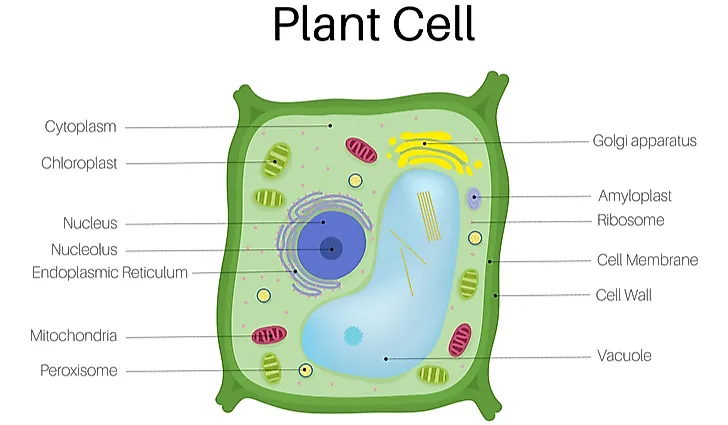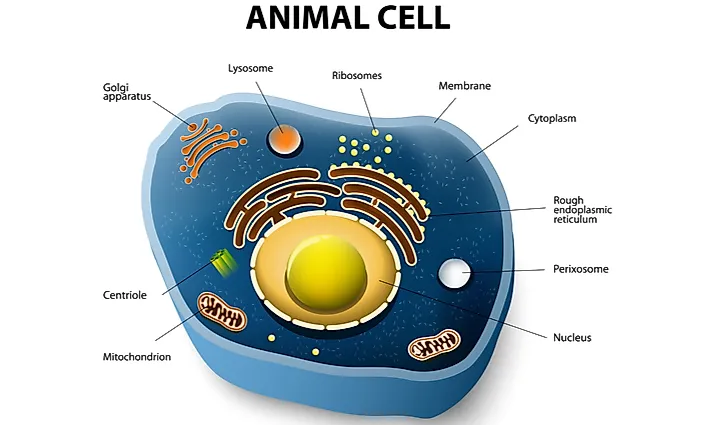How Are Plant Cells And Animal Cells Similar
What are the Differences Between Plant Cells and Animal Cells?

Effectually 1838, an animal physiologist, Theodor Schwann, and a botanist, Matthias Schleiden, put forth the unprecedented work on the concept of cells equally the building blocks of all living organisms. From that point forrard, jail cell theory has grown into the foundations of modern era biological enquiry without which none of today's discoveries would be possible.
We at present know that there are a myriad of dissimilar cell types, with outstanding capabilities and functions. Regardless of how different all types of cells may be, there are common characteristics to all of them, forth with established differences besides.
Whether we are looking at multicellular organisms or those containing ane single cell, all of them will be manifesting the same features necessary to support life. We volition go over certain similarities and characteristics of the animal and establish cells, in gild to gain a improve understanding of each. In that context, the final few paragraphs we will be focusing on the main differences between plant cells and animal cells.
Constitute Cells
The size of plant cells usually ranges from ten-100 µm, which is a range that is bigger than animal cells. The primary function of these cells in plants is to carry out the process of photosynthesis via chloroplast which gives them their colour. The cells themselves maintain their structure thanks to cellulose that brand the walls of the cells. These cell walls aren't found in cells inside the animal kingdom - we'll await at that in but a bit.

At that place are several different small structures inside the cell itself, chosen organelles, each with a specific part. These organelles are found in both types of cells discussed hither, with many of them identical in function. Here are some of the virtually important ones that we find in institute cells:
Plasma Membrane - makes sure the structure of the cells remains intact and consequently keeps the jail cell content from spilling out. It besides enables molecule movement via osmosis and improvidence.
Cell wall - different from a membrane by being found only in institute cells where it encompasses the cell membrane. The jail cell wall is house only completely porous at the aforementioned fourth dimension.
Chloroplasts/plastids - also found but in plant cells, these organelles enable photosynthesis when exposed to sunlight. Plastids are a grouping name for diverse kinds of chloroplasts that differ in color.
Vacuoles - provide structural integrity to the cell but likewise incorporate a variety of liquids or solids. These organelles are responsible for the colors we see on flowers.
Cytoplasm - the enzymes institute within these structures are at the helm of all metabolic processes that happen within.
Creature Cells
Brute jail cell size ranges from ten-30 µm, which makes it obvious that plant cells can exist much bigger, clearly, depending on the found. The primary departure from plant cells is that animal cells don't comprise chloroplast nor structurally important jail cell walls.
It is obvious why creature cells lack in chloroplast, every bit there is no procedure of photosynthesis that generates nutrient for the cells - animal cells create their energy via different procedure. But the interesting question is why exactly practise they lack prison cell walls.

The primary theory is that the principal "culprit" for the absence of cell wall is the evolution itself. Dissimilar plants, creature kingdom evolved to have more circuitous cells that are specialized to a greater extent and are able to sustain the structure of the cell without the jail cell wall. Evidently, merely like plants cells, they besides comprise organelles with a variety of functions:
Plasma membrane - simply like in institute cells, this structure allows for molecule movement through the prison cell itself and protects the internal structures of the cell, that is, other organelles.
Mitochondria - generates the energy necessary to sustain jail cell life by breaking down nutrients and transforming them into "food" molecules for the cell.
Cytokinesis - responsible for the division of cytoplasm while the cell is dividing. In animal cells, this division happens via the formation of cleavage furrow that grips the membrane and divides information technology in one-half.
Centrioles - cylindrically shaped objects within the cells are active during the process of cell partitioning. Their function is to conform the formation of microtubules - structural polymers of the cell.
Cilia - microtubules that help in locomotion of the cell.
Master Differences Between Plant and Animal Cells
Both types of cells are identical in so much that they demand to somehow produce energy to support themselves and to permit for growth. Both cell types too contain internal structures that are employed in specific processes that permit optimal operation on a cellular level.
Every bit was visible throughout the article, at that place are sure types of cells that are found in animal cells that cannot be plant in establish cells, and vice versa.
Unlike Organelles
The nearly obvious ones are cell chloroplast, wall, and vacuoles. These cells tin only be constitute in plants. Although both animal and establish kingdom falls nether the eukaryotes (multi-celled, as opposed to prokaryotic, which is single-celled), animal cells have much more complex structure.
Some organelles that are institute in animal cells but non in found cells are as follows: centrioles, cilia, desmosomes and lysosomes.
Size and Structure
Brute cells await very dissimilar to plant cells. They are typically smaller than constitute cells, with a roundish shape which is adequately irregular. Plant cells have a rectangular shape and are larger.
The Cell Wall
Animate being cells do not contain prison cell walls as one of the organelles, but they do have a plasma membrane which is the same as in plants.
Nucleus Position
Both types of cells exercise accept a nucleus, which is expected. Still, in plants, it is located to the side of the jail cell, whereas in animal cells have their nucleus in the middle.
Number of Vacuoles
Brute cells contain a multitude of small vacuoles, while plant cells can simply accommodate one, which is quite large.
Nutrient Synthesis
Brute cells are not equipped to carry out the synthesis of nutrients, while plants have no problems with synthesising various acids, vitamins and similar.
Lack of Communication Signals
Pores called plasmodesmata are in accuse of communication signals, only besides the passing of molecules betwixt two cells. These pores are not identified in beast cells.
Source: https://www.worldatlas.com/feature/what-are-the-differences-between-plant-cells-and-animal-cells.html
Posted by: euresiging.blogspot.com

0 Response to "How Are Plant Cells And Animal Cells Similar"
Post a Comment